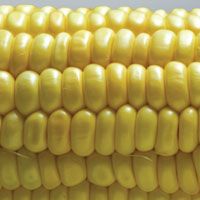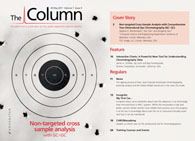Pesticide analysis
The N-methylcarbamates and the N-methylcarbamoximes are among the most widely used pesticides in agriculture. Dionex has announced an improved HPLC method for the determination of these chemicals.

The N-methylcarbamates and the N-methylcarbamoximes are among the most widely used pesticides in agriculture. Dionex has announced an improved HPLC method for the determination of these chemicals.
These pesticides may create health problems, including issues impacting the central nervous and reproductive systems. As a result, concerns over the presence of carbamate residues in water, crops, and food products have promoted increased awareness and testing for these compounds.
The improved method focuses on the determination of carbamates in rice, potato and corn as specified in AOAC Method 2007.01 and European Union standard EN 15662, 2008. Application Note 272: Faster Yet Sensitive Determination of N-Methylcarbamates in Rice, Potato and Corn by HPLC is reported to demonstrate accurate results using the company’s UltiMate 3000 HPLC system with an Acclaim Carbamate column and detection performed using an FLD-3400RS fluorescence detector.
To download the method visit www.dionex.com
This story originally appeared in The Column. Click here to view that issue.
Analytical Challenges in Measuring Migration from Food Contact Materials
November 2nd 2015Food contact materials contain low molecular weight additives and processing aids which can migrate into foods leading to trace levels of contamination. Food safety is ensured through regulations, comprising compositional controls and migration limits, which present a significant analytical challenge to the food industry to ensure compliance and demonstrate due diligence. Of the various analytical approaches, LC-MS/MS has proved to be an essential tool in monitoring migration of target compounds into foods, and more sophisticated approaches such as LC-high resolution MS (Orbitrap) are being increasingly used for untargeted analysis to monitor non-intentionally added substances. This podcast will provide an overview to this area, illustrated with various applications showing current approaches being employed.
New Method Explored for the Detection of CECs in Crops Irrigated with Contaminated Water
April 30th 2025This new study presents a validated QuEChERS–LC-MS/MS method for detecting eight persistent, mobile, and toxic substances in escarole, tomatoes, and tomato leaves irrigated with contaminated water.
University of Tasmania Researchers Explore Haloacetic Acid Determiniation in Water with capLC–MS
April 29th 2025Haloacetic acid detection has become important when analyzing drinking and swimming pool water. University of Tasmania researchers have begun applying capillary liquid chromatography as a means of detecting these substances.

.png&w=3840&q=75)

.png&w=3840&q=75)



.png&w=3840&q=75)



.png&w=3840&q=75)









